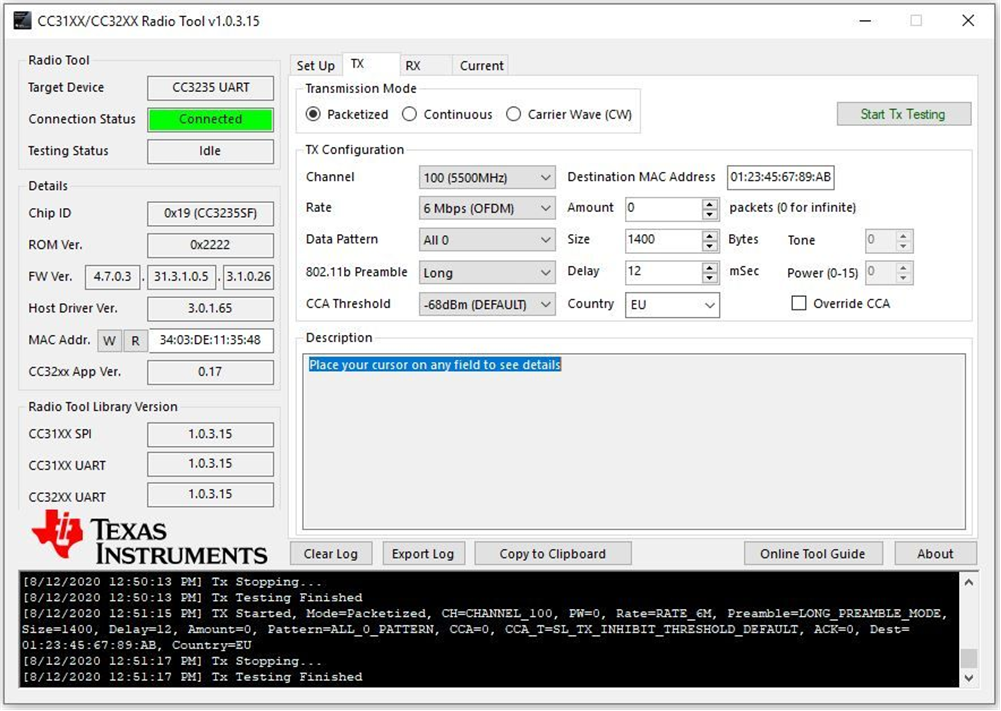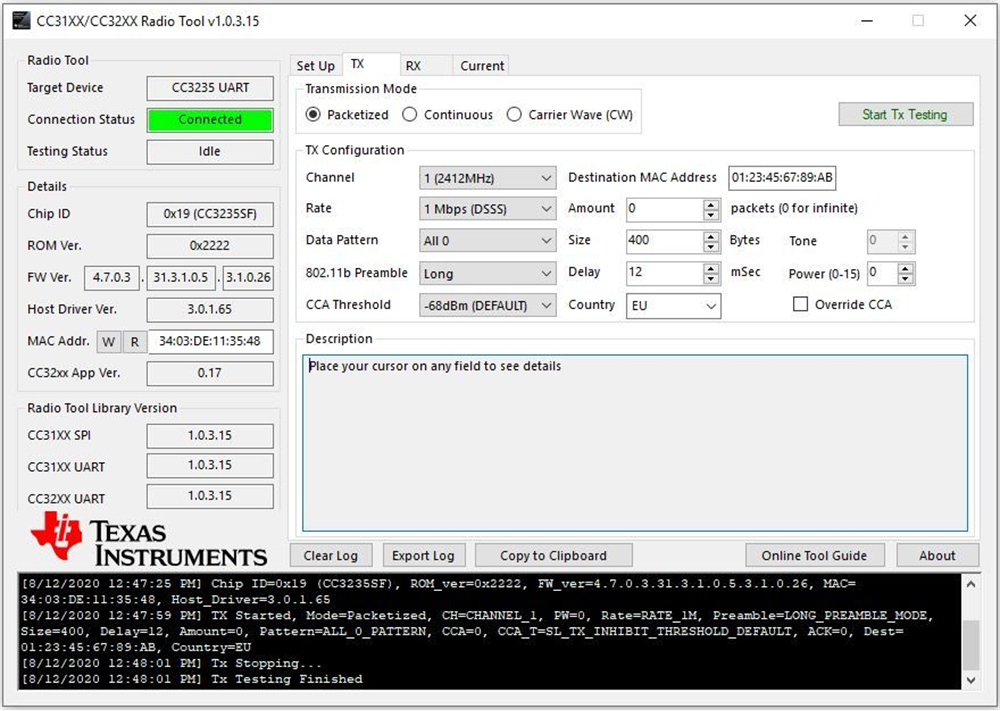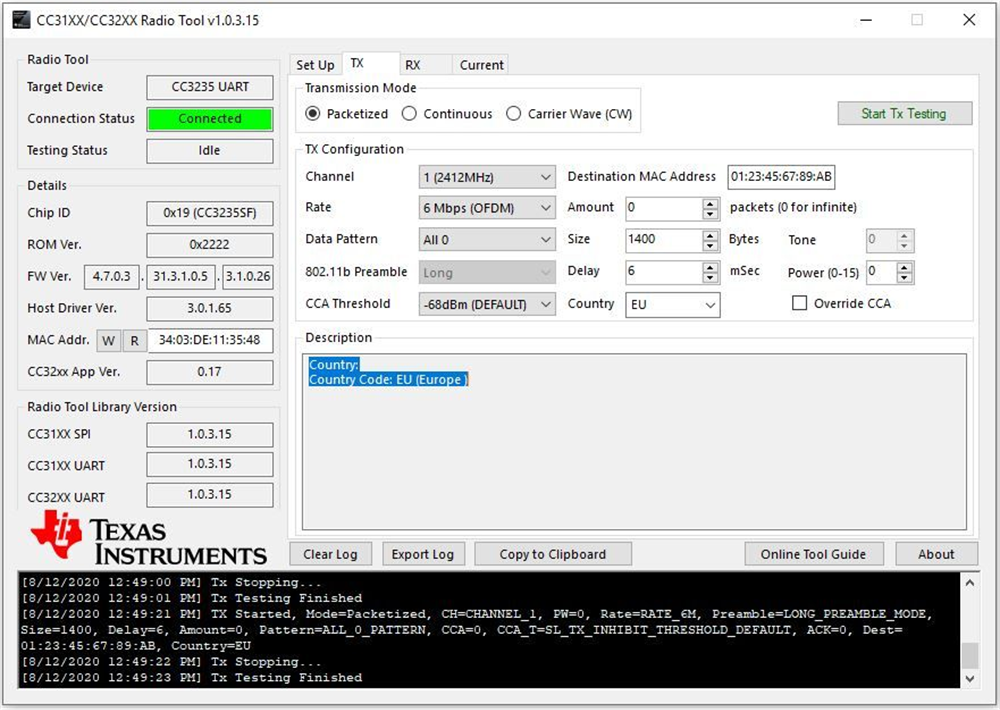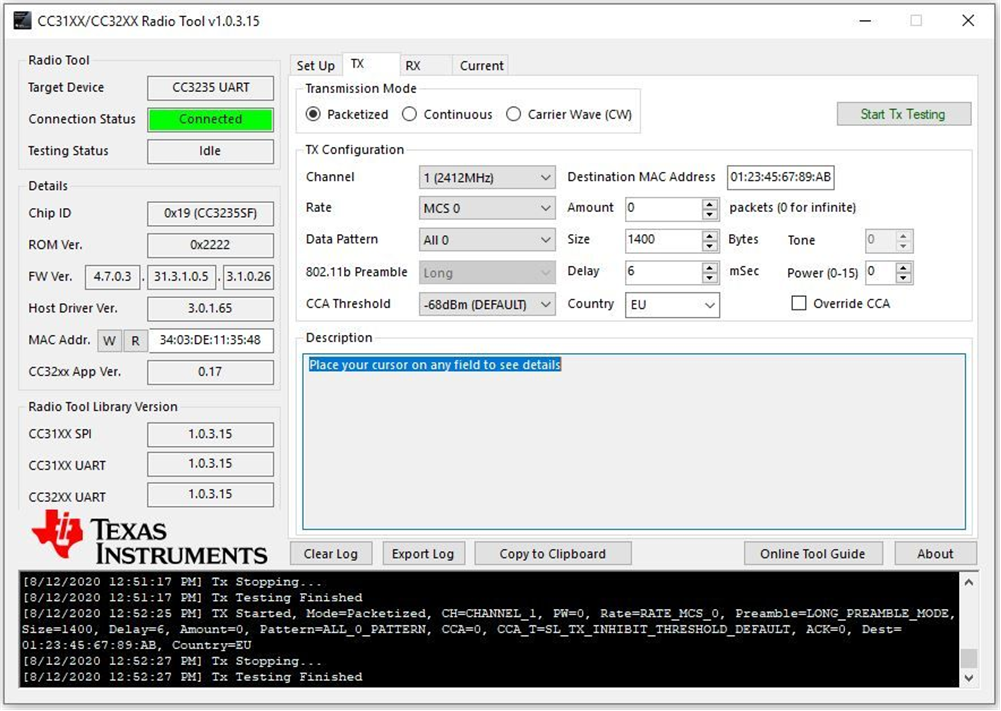SWRA681 September 2020 CC3100 , CC3100MOD , CC3120 , CC3120MOD , CC3135 , CC3135MOD , CC3200 , CC3200MOD , CC3220MOD , CC3220MODA , CC3220R , CC3220S , CC3220SF , CC3235MODAS , CC3235MODASF , CC3235MODS , CC3235MODSF , CC3235S , CC3235SF
- Abstract
- Trademarks
- 1Introduction
- 2CE Conformity Test Requirements and Test Procedure for Wi-Fi Devices
-
3Test Procedure for Compliance Testing - EN
300 328
- 3.1 Product Information as per Annex-E of EN 300 328
- 3.2 RF Output Power - EN 300 328
- 3.3 Power Spectral Density - EN 300 328
- 3.4 Occupied Channel Bandwidth (OCBW) - EN 300 328
- 3.5 Transmitter Unwanted Emissions in the OOB Domain - EN 300 328
- 3.6 Transmitter Unwanted Emissions in the Spurious Domain - EN 300 328
- 3.7 Adaptivity (Channel Access Mechanism) - EN 300 328
- 3.8 Receiver Spurious Emissions - EN 300 328
- 3.9 Receiver Blocking - EN 300 328
-
4Test Procedure for Compliance Testing for
Wi-Fi Devices - EN 301 893
- 4.1 Product Information as per Annex-G of EN 301 893
- 4.2 Test Channels - EN 301 893
- 4.3 Nominal Center Frequencies - EN 301 893
- 4.4 Occupied Channel Bandwidth (OCBW) - EN 301 893
- 4.5 RF Output Power - EN 301 893
- 4.6 Power Spectral Density - EN 301 893
- 4.7 Tx Unwanted Emissions Outside the 5 GHz RLAN Band - EN 301 893
- 4.8 Tx Unwanted Emissions Within the 5 GHz RLAN Bands - EN 301 893
- 4.9 Receiver Spurious Emissions - EN 301 893
- 4.10 Receiver Blocking - EN 301 893
- 4.11 Adaptivity (Channel Access Mechanism) - EN 301 893
- 4.12 Dynamic Frequency Selection (DFS) - EN 301 893
- 4.13 User Access Restrictions - EN 301 893
- 5Test Procedure for Compliance Testing for Wi-Fi Devices - EN 301 489
- 6Test Procedure for Compliance Testing for Wi-Fi Devices – IEC 62368-1
- 7Test Assessment for Human Exposure Restrictions – EN 62311
- 8References
2.4 Configuring and Testing the EUT (Wi-Fi Device – CC3xxx)
The EUT (Wi-Fi Devices – CC3x20 and CC3x3x type devices) can be configured to the desired mode by using a CC3XXX Radio Testing Tool [9] from TI. The Radio Testing Tool [9] is a Windows-based software tool for RF validation and testing of SimpleLink Wi-Fi CC3x20 and CC3x35 based designs during development and certification. The tool enables low-level radio testing capabilities by manually setting the radio into transmit or receive modes. Using the tool requires familiarity and knowledge of radio circuit theory and radio test methods. For more informaation on how to use Radio tool to configure the TI’s Wi-Fi chip to the desired mode on both TI and Non-TI EVMs/Custom equipment that uses TI’s Wi-Fi Chips, see the SimpleLink™ Wi-Fi® CC3x20, CC3x3x Radio Tool User Guide [10] on. The CC3XXX Radio Testing Tool [9] can be downloaded for free of charge from the TI website [11].
Note that different Radio Testing Tool [12] is required for configuring and testing CC3100 and CC3200 devices. This tool also can be downloaded from TI website [11].
The typical test configurations for CC3235 in different modes by using Radio Testing Tool [9] is shown in Figure 2-2 through Figure 2-5.
 Figure 2-2 CC3235 – Configuration for 802.11a
Mode
Figure 2-2 CC3235 – Configuration for 802.11a
Mode Figure 2-3 CC3235 – Configuration for 802.11b
Mode
Figure 2-3 CC3235 – Configuration for 802.11b
Mode Figure 2-4 CC3235 – Configuration for 802.11g
Mode
Figure 2-4 CC3235 – Configuration for 802.11g
Mode Figure 2-5 CC3235 – Configuration for 802.11n
HT-20 Mode
Figure 2-5 CC3235 – Configuration for 802.11n
HT-20 Mode